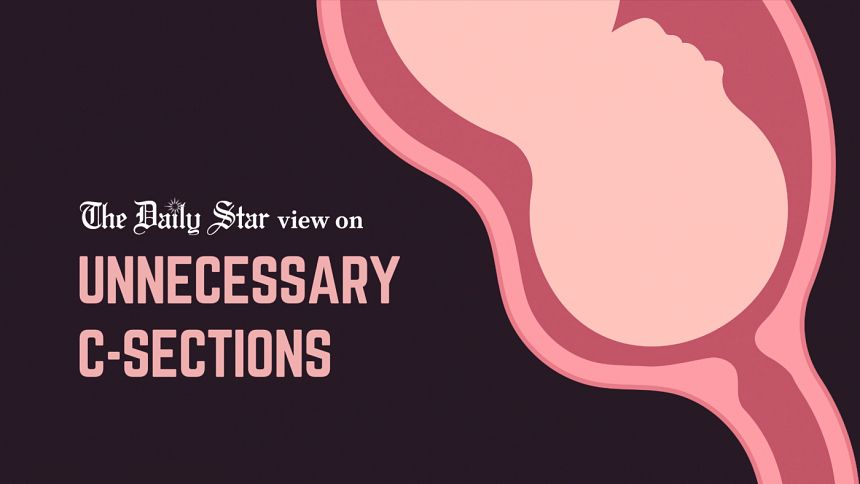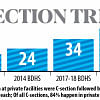The concerning rise of C-sections

In 2011, the rate of Caesarean section (C-section) deliveries in our country was just 11 percent. Now, more than half (50.7 percent) of infants are born through C-sections. This is a matter of great concern, as the procedure brings with it a slew of health complications, burdening countless lives and our healthcare system. So, why is it that the government, throughout a whole decade, has failed to rein in this rampant practice?
From 2022 to 2023, C-section deliveries jumped by more than nine percent, according to Bangladesh Bureau of Statistics. If that's not alarming enough, up to 80 percent of births happen through C-sections in Kushtia, Chuadanga, Meherpur, Jhenaidah, and several other districts. The reasons are multifold: demands and requests of patients and relatives, not wanting to endure labour pain, lack of trained midwives, workforce and equipment in health services and doctors' prescribing C-sections even when they are not necessary.
Patients and their families suffer from a host of issues brought on by C-section deliveries. Most importantly, when done unnecessarily, the procedure puts both the mother and newborn at health risk, to say nothing of the financial burden on lower- and middle-income families. For corrupt doctors who encourage patients to have C-sections, however, this burden translates to massive financial gains, which is quite evident by the fact that the procedure usually takes place at unregulated private healthcare facilities. A Save the Children Bangladesh report in 2018 found that Bangladesh parents paid Tk 48.3 crore in out-of-pocket expenses for medically unnecessary C-sections, an average of Tk 51,905 per case. The average cost of a C-section was Tk 40,000, while the cost of a normal delivery was Tk 3,565.
It is quite clear the rise of C-sections is not due to necessity but a failure of the healthcare system, as the international healthcare community considers the "ideal rate" for C-sections to be between 10 and 15 percent. To tackle this crisis, the government must take robust actions. First, it must increase the national budget allocation for health from a measly 2.63 percent and effectively spend it to address the workforce and equipment shortage, improve public healthcare facilities, and reduce out-of-pocket expenditure. It must invest in trained midwives, strengthen maternal and neonatal care at the upazila healthcare facilities and initiate awareness campaigns about the benefits of natural birth. Next, it has to strictly regulate the sector, so that unscrupulous facilities cannot prey on unsuspecting patients. The government has to keep in mind that unregulated C-sections are putting the lives of countless mothers and newborns at risk, and must act accordingly.


 For all latest news, follow The Daily Star's Google News channel.
For all latest news, follow The Daily Star's Google News channel. 







Comments